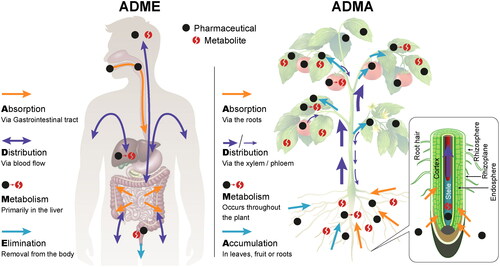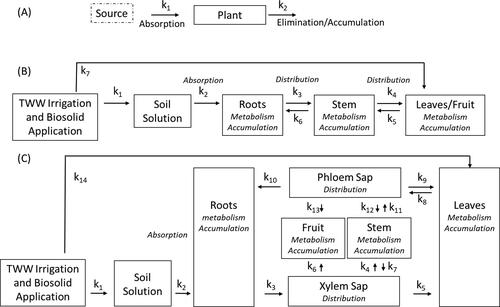Figures & data

Figure 1. Comparison of pharmacokinetic processes in the human body and in the plant. In the human body, the fate of a pharmaceutical is defined along the processes of absorption, distribution, metabolism, and excretion (ADME); in the plant, these processes are absorption, distribution, metabolism and accumulation (ADMA).


